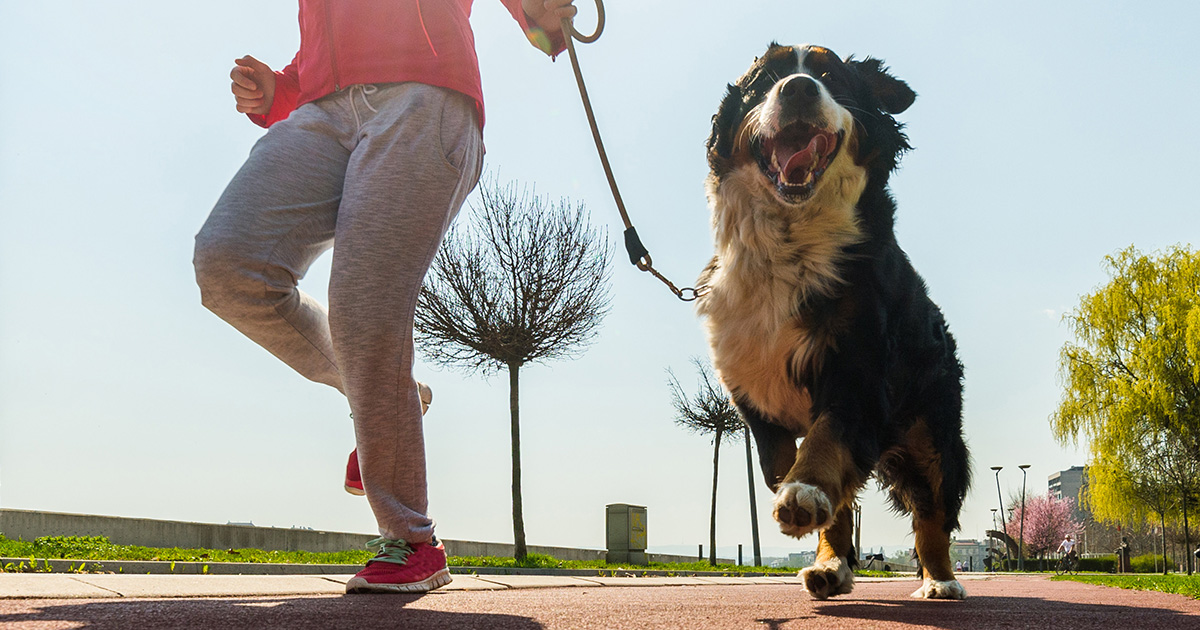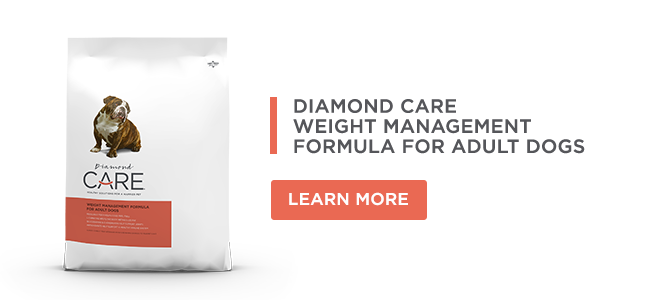How are you doing with your latest New Year’s resolutions? Did you make any resolutions involving your canine companion?
If you’re still focused on your goals for the year, that’s great! If you’ve already given up, just remember today’s a new day. It’s not even February — there are still 10.5 months left to make something happen.
If helping your overweight dog get healthier or lose weight is on your list but you’re not sure where to begin, we’ve identified seven steps to help you get started.
1. Weigh your dog, and determine, ideally with your veterinarian, your dog’s body condition score.
These factors should be recorded in your dog’s medical record and will be used as a starting point for your dog’s weight management program. Your veterinarian may also provide an ideal, or target, body weight for your canine companion so you can help your dog lose weight safely. If you’re not sure whether your pooch is pudgy, we can help you figure that out.
2. Calculate the number of calories your dog needs.
You can’t know how much to feed your dog if you don’t know how many calories your pet needs each day. Overfeeding a dog is easy — which helps explain why more than half of U.S. dogs are overweight or obese.
Your veterinarian or veterinary nurse will happily calculate the proper number of calories your dog needs for weight loss. Or if you enjoy math, you can crunch the numbers yourself. Here’s the formula you’ll need to know to maintain your dog’s ideal weight: [(pet’s weight in pounds ÷ 2.2) x 30] + 70 = calories needed daily. This should give you a general idea of how many calories you should be feeding, assuming your dog weighs between 5 and 100 pounds.
3. Evaluate the food and treats your dog is currently eating and calculate how much of each you can feed.
Once you know how many calories your dog needs, you can figure out how much to feed. This step could be eye-opening for you, especially if you don’t presently measure your dog’s food or limit the number of treats that are given.
You may need to make some decisions about what food and treats to feed. Should you change your canine companion’s food to a weight management formula such as Diamond CARE Weight Management Formula for Adult Dogs? Can you limit the number of treats to no more than 10 percent of your dog’s daily calories? Can you find alternative treats that are healthier for your best friend, such as green beans or carrots?
If you find all of this math confusing, your veterinarian or veterinary nurse can help you develop a food and treat plan that works for you and your dog.
4. Measure your dog’s food.
A pet parent’s single greatest tool in the fight against excess weight is a measuring cup. You’ll want to use one to carefully measure the amount of food given at each meal. It’s an easy way to know how much your dog is eating (assuming no one else is also feeding the dog) and to make adjustments as needed.
5. Increase your dog’s activity level.
Small increases in exercise and play can make a big difference. If your furry friend is already getting 20 to 30 minutes of brisk walking, increase the time spent by about 25 percent. If your dog is relatively inactive, start with the American Animal Hospital Association’s recommendation of five-minute walks three times a day.
6. Weigh your dog regularly.
Because it can be difficult to see changes early in the process, continue to visit your veterinary clinic to track your dog’s weight. Initially, you’ll want to reweigh your dog every two weeks, but then the time between weigh-ins can be stretched to every two to four weeks.
Depending on your veterinary clinic’s policy, you may want to schedule a short visit with a veterinary nurse. A “weight check” or weigh-in offers several benefits. Your dog is weighed on the same scale. The new weight can be added to your dog’s medical record. You have an opportunity to ask questions, discuss concerns or get help with adjusting food or treats. And weigh-ins at the clinic also let you celebrate your dog’s successes!
7. Watch for saboteurs.
All family members need to be onboard with helping your dog lose weight and get healthier. One person should be responsible for feeding the dog to avoid overfeeding. And everyone should be aware of the importance of limiting treats. Consider using a jar to hold the daily treat portion — ideally with treats broken into smaller pieces — that anyone in the home can give. When the treat jar is empty, that’s it for treats that day.
And don’t forget about the food bowls of other pets in the home. Make sure your dog doesn’t sabotage his or her weight loss efforts by sneaking food from other pets’ bowls.
Anyone who has ever struggled with weight loss knows it takes commitment and a shift in mindset. The same is true for managing your dog’s weight loss. But as challenging as it can be, weight loss and the resulting improved health can add more years to your dog’s life and more life to those years.
RELATED POST: How to Help Your Dog Avoid Winter Weight Gain








